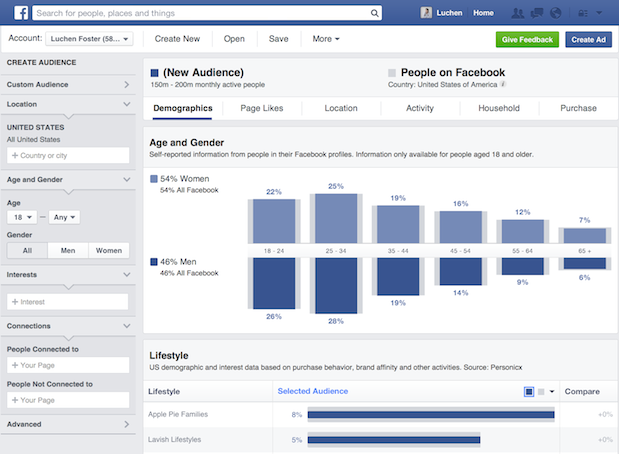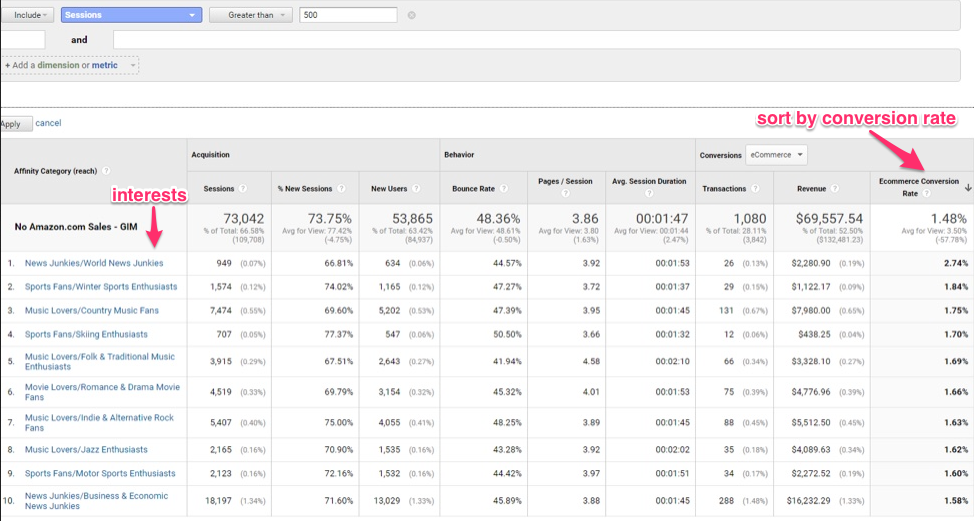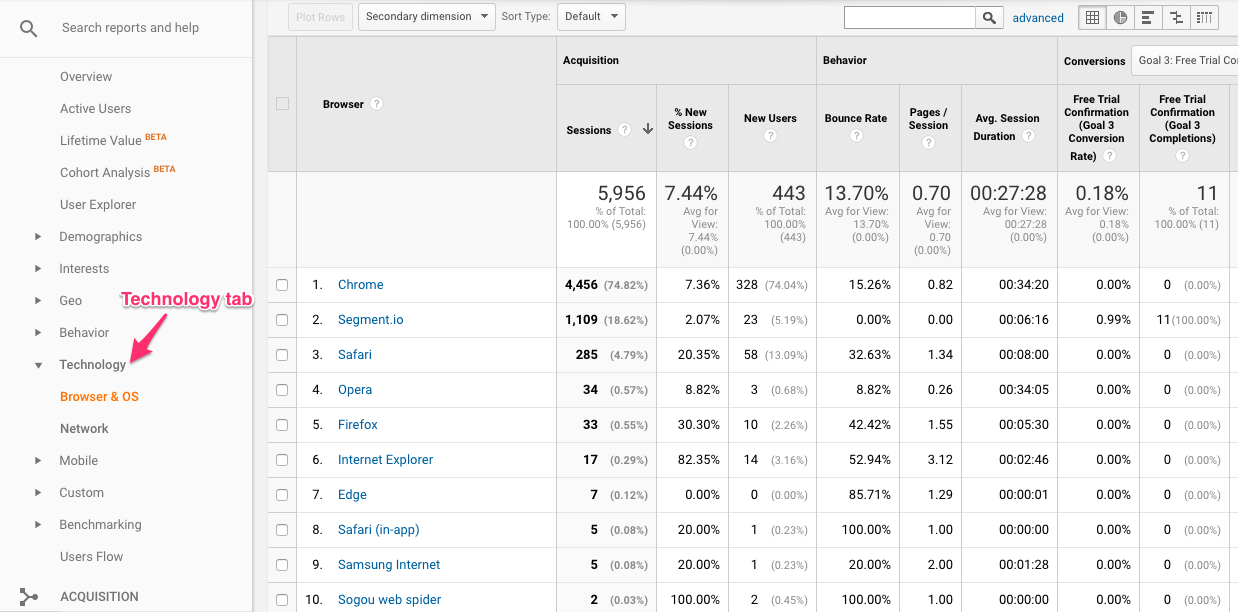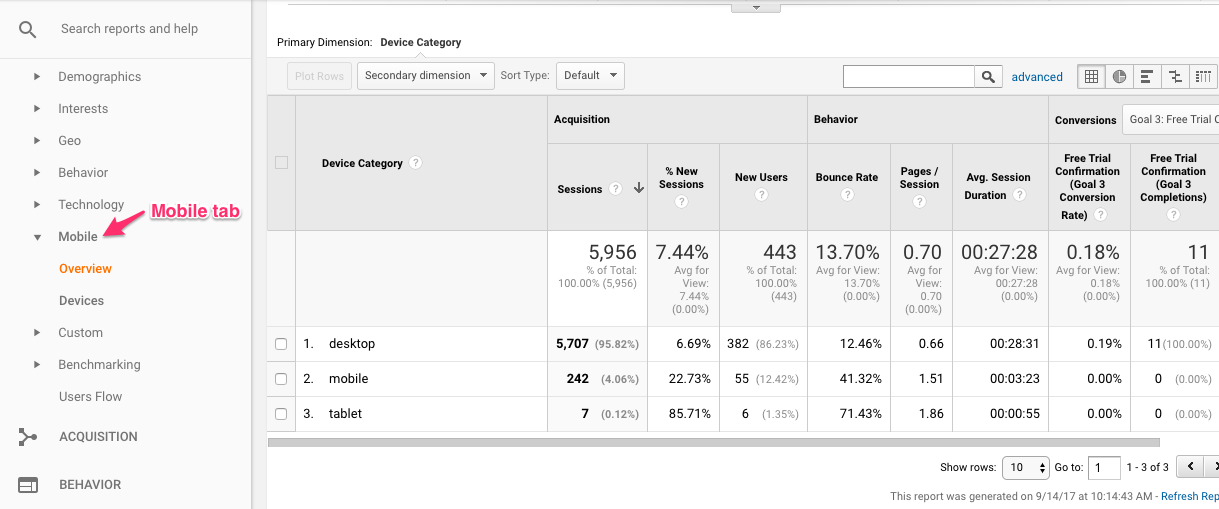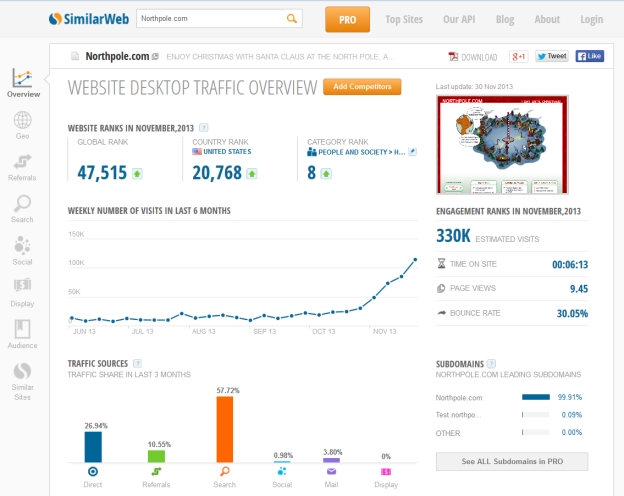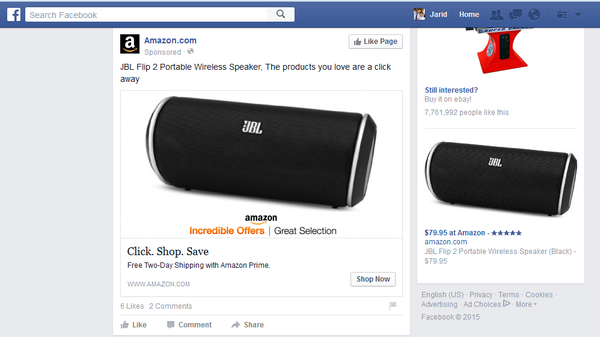Ecommerce sellers have more potential buyers at their fingertips online, through the use of multichannel listing software like Sellbrite, than any mom-and-pop store can hope to gather. But this doesn’t mean sellers should market to as many people as possible.
Instead of advertising to a large, indefinite group of people, ecommerce sellers have to target specific audiences. When marketing is directed towards specific customer types, it resonates with buyers in a way that makes them feel more connected to your products and your brand.
Targeted marketing begins with identifying the distinctions between your buyers. Once sellers can determine the unique types of customers within their larger audience, they can cater their marketing to each group’s needs.
A tried and true method of sorting out your customer base is creating buyer personas. Building these generalized archetypes of your average buyers ensures that you understand them well enough to engage them and motivate them to purchase.
To help sellers start building their customer characters, we’re going to explain what to include in buyer personas and how to create them for your ecommerce customers.
What is a buyer persona?
Buyer personas are created by companies and represent fictional examples of their core customers. Businesses use these personas to make key marketing decisions, like what their messaging should be, what marketing channels they should use, and how much they should spend on acquisition efforts.
Here are a few examples of buyer personas:
[Source]
[Source]
Most sellers only need 3 to 5 buyer personas to cover the different groups in their customer base. With too many personas, the profiles become more indistinct and more difficult to use constructively.
What information should I collect?
To create an accurate picture of every customer, buyer personas need a balance of both quantitative and qualitative insights . We’ve divided these insights into four categories: demographics, psychographics, online presence, and financial value.
Demographics
Demographics are objective identification factors that help to explain who your customers are. Here are suggested demographics to identify for each buyer persona:
- Location
- Age
- Gender
- Education level
- Job title
- Career industry/field
- Income level
- Relationship status
- Family size
These demographics provide the basic data needed for each persona, but sellers can always dig deeper with demographics , such as detailed job and company descriptions, to create even more specific profiles. For example, if you’re a home goods online retailer, you might want your buyer personas to note if your core customers are home owners or apartment renters.
Psychographics
Psychographics are measurements of customers’ habits, attitudes, and interests that help to explain why they might make a purchase. Here are a few psychographics a seller might include in a persona:
- What are the goals of buyers in this persona? How can your product help them achieve these?
- What are their concerns? How can your product help solve them?
- What are their values?
- What are their hobbies and interests?
- What are their objections to your product?
Because psychographics are subjective, they might seem less useful. But these psychological aspects of your buyers are critical because they represent what your core customers actually care about. You can craft value propositions that are more effective by speaking to your core customers’ psychology.
Online Presence
Data about how each buyer persona interacts with technology informs presentation strategies for marketing. For instance, this data can help you pick the best social media channels to advertise on or help you decide whether your ads should be mobile-friendly.
Here are a few examples of online presence data you can collect when building a buyer persona:
- Where do buyers from this persona typically find information online?
- What are their favorite social media channels?
- What is their preferred form of communication?
With online presence information, sellers can make sure they’re getting their message to the right people in the right places.
Financial Value
To measure whether your marketing efforts are effective at converting your targeted groups, you should include a lifetime value (LTV) to customer acquisition cost (CAC) ratio in each buyer persona. LTV indicates the projected revenue a customer will generate during their lifetime as a customer, and CAC measures the cost needed to secure a new customer.
The ratio of LTV to CAC is important because it indicates how well you’re set up to be profitable. The industry standard in software-as-a-service companies is an LTV:CAC ratio of 3:1 or greater—this is also a good benchmark for ecommerce companies. If any persona’s ratio falls below 3, sellers should consider ways they can improve retention for these customers or how they can lower the costs of acquiring them.
How do I collect this information?
To gather the necessary information for your buyer personas, you’ll need to use a variety of tools and resources. Here’s a recommended list of resources based on each category of information you’ll collect:
Demographics
- Google Analytics — If you have a web store with Google Analytics installed, you can use the tool to see visitor demographics. It’s found under the demographics section of the audience tab and it tracks the age and gender of your site visitors.
[Source]
You can also track the location of your site visitors under the Geo section of the Audience tab.
- Facebook Audience Insights — If you have a Facebook page for your business, Facebook Audience Insights is a great tool for understanding the demographics of your target audiences. This tool indicates the following demographics: age, gender, lifestyle, education, relationship status, job role and household size.
[Source]
You can choose to view these demographics for the people who have connected to your Page or Facebook event, or people in the Custom Audiences you’ve created.
- Order history — Collect demographics of core buyers from your web store’s order history. Track the accounts with the most purchases and use the demographic information in their orders, such as their location and gender.
Psychographics
- Surveys — Psychographics require personal information, so the best way to collect them is by directly asking core customers about their values and interests with a survey.
[Source]
If you have trouble getting responses, try incentivizing these surveys with a gift card or discount.
- Google Analytics — Using cookie data from other sites your visitors have been on, Google Analytics can track the interests of your web store visitors.
[Source]
Google Analytics even lets you sort these interests by ecommerce conversion rate, so you can easily match these interests to your core customers.
Online Presence
- Google Analytics — Google Analytics measures the online presence of your site visitors. Under the technology tab, you can view which browsers and networks your visitors are using.
Under the mobile tab, you can also view the devices your visitors used to access your site.
Once you know how your top visitors are accessing your site, you’ll want to make sure that your advertising is compatible with the technology they’re using.
- Consumer reports — Consumer reports, like Nielsen’s social media report, can be a great resource for identifying how your top customers are using technology.
[Source]
You can use the reported demographics in these studies to infer what technology your top buyers might be using.
- Surveys — Just like with psychographics, online presence information can be easily gathered with surveys. When asking about potential marketing channels, like social media networks, be sure to not only ask what channels your core customers use but also when and how often they use them. Knowing this, you’ll know which channels are popular enough to target and when ads should be placed on them.
Financial Value
To calculate your LTV to CAC ratio, you can use these basic LTV and CAC formulas.
LTV takes the value of how much the customer spends on average and multiplies that value by how often they spend and the average customer retention time.
CAC takes the total marketing cost of acquiring customers divided by the number of customers acquired in a set time period.
For more complex LTV and CAC formulas and information on calculating each formula value, check out this resource for LTV and this resource for CAC.
What if I just started my online business?
If you just started your online business and don’t have enough customer data to create personas, start by looking at your competitors to make inferences about your core customers. You can use software like Similar Web to analyze competitors’ web traffic.
[Source]
You can also check out your competitors’ social media pages to see which consumer types are the most responsive to their posts.
How do I apply this information?
A buyer persona gives you a close-up of your best customer. Using personas, sellers can engage their identified customer types with marketing that is relevant and useful for each group. As you collect this information, put it all together to build comprehensive pictures of your different buyer types.
The demographics, psychographics, and online presence information in buyer personas should inform your messaging and marketing channel choices. Knowing who their core customer is and what they care about with this info, sellers can improve their marketing strategies with questions like:
- What are the most used marketing channels for this buyer persona, and am I using these channels enough?
- Based on what this persona cares about, do I think my stated value proposition will resonate with them?
The financial value information of each buyer persona should be used to determine whether your marketing strategies are leading to profits or losses. If a persona’s LTV to CAC ratio is too low, sellers can work on decreasing the costs of their acquisition efforts or improving their retention strategies.
As your buyer persona process gets more sophisticated, you can define each profile by preferred selling platforms such as:
- Amazon
- Walmart
- Ebay
- Your company website
This will help refine your marketing strategies even further. You can begin to ask questions like: Do my Walmart customers respond well to email discounts? Does my Amazon persona use Facebook more frequently than my Ebay persona?
[Source]
Once personas have been connected to selling platforms, sellers can brainstorm ways to save money by comparing each persona’s LTV:CAC ratio to the costs associated with using each platform. For example, a seller whose Amazon buyer persona has a low LTV:CAC ratio might consider temporarily not paying for Amazon FBA until their Amazon persona’s ratio increases.
Aim for the bulls-eye, not the whole dartboard
Marketing campaigns motivate purchases when they speak to a customer’s specific needs and wants. Sellers who try to reach as many customers as possible will find that their marketing efforts are too directionless to resonate with buyers. Instead of focusing customer outreach on quantity, sellers can use buyer personas to develop targeted marketing strategies. By knowing who their core customers are and what they care about, sellers can engage their buyers to encourage conversions.





